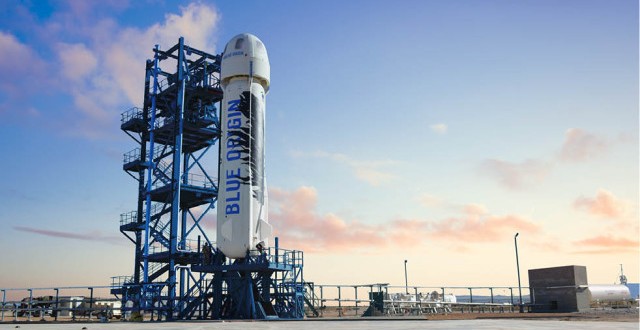Blue Origin, a private space company owned by Amazon CEO Jeff Bezos, was able to launch and land its reusable rocket last year. To show that it really is a reusable rocket, the company fired it up again and sent it back up and it made a second successful landing.
The spacecraft—consisting of a booster and an unmanned capsule—completed this successful test flight on Saturday. After separating from the booster, the capsule soared high, hitting a maximum altitude of 339,138 feet (about 103,400 meters), which is about two miles above the cutoff point for atmospheric flight. After what would be about four minutes of weightlessness for humans onboard, a parachute deployed, and it landed safely back at the West Texas launch site.
The booster, meanwhile, began falling much sooner, reigniting at an altitude of 3,635 feet (1,108 meters), or six seconds before it would have impacted the Earth—a maneuver attempting to push the envelope of the engine’s performance, according to Blue Origin’s founder and founder of Amazon, Jeff Bezos. With its four landing legs deployed, it settled gently back on the ground.
The capsule also contained two science experiments, according to Space.com. One was a box of rocks logically titled the “Box of Rocks Experiment,” which aimed to investigate how rocks move in weightlessness—which will hopefully help clarify how rocky soil on small asteroids moves.
The second experiment involved a marble being dropped into a bed of dust (also logically titled, the “Collisions in Dust Experiment”), which attempted to get information that will help scientists understand how collisions between particles in the early solar system worked.
There was no word from competitor Elon Musk, who runs SpaceX, as he was still likely basking in the glow of his newly launched Tesla Model 3.
Agencies/Canadajournal
 Canada Journal – News of the World Articles and videos to bring you the biggest Canadian news stories from across the country every day
Canada Journal – News of the World Articles and videos to bring you the biggest Canadian news stories from across the country every day



